How can you identify different ores?
Today, Dasen mining has sorted out the characteristics of common ores, so that you can quickly learn the method of identifying ores. What are you waiting for? Hurry up and study together!
 |
Photo Name: gold ore (natural gold) The ore mineral is natural gold, has a metallic luster, and occurs in calcite vein in flake aggregate. In addition, a small amount of pyrite is disseminated in calcite vein. |
| Photo Name: gold silver ore
The ore minerals are mainly natural silver, natural gold, pyrite and a small amount of galena, of which silver and gold can not be distinguished by naked eyes. Pyrite is distributed in star shape. Gangue minerals mainly include red rose pyroxene and smoke gray quartz, which has granular structure. The ore metasomatic structure is developed, like a banded structure. It is the product of metamorphic hydrothermal superimposed volcanic hydrothermal deposit. Silver 135.0g/t, gold 66.75g/t |
 |
 |
Photo Name: natural silver ore
The ore is silver white, part of the surface is gray black due to oxidation, metallic luster, and it is an irregular granular aggregate. |
| Photo Name: gold ore
The ore mineral is natural gold, which is bright gold with large particles, golden color and strong metallic luster. It is in granular structure and disseminated structure and occurs in quartz vein. |
 |
 |
Photo Name: gold ore 2
It is brecciated antimony gold ore and the ore mineral stibnite. It is lead gray, stripe gray black, metallic luster and opaque. It has crystalline structure and cemented the breccia of surrounding rock (slate) to form brecciated structure. Gold mainly occurs in the veinlets of pyrite. |
| Photo Name: Antimony gold ore
It is brecciated antimony gold ore and the ore mineral stibnite. It is lead gray, stripe gray black, metallic luster and opaque. It has crystalline structure and cemented the breccia of surrounding rock (slate) to form brecciated structure. Gold mainly occurs in the veinlets of pyrite. |
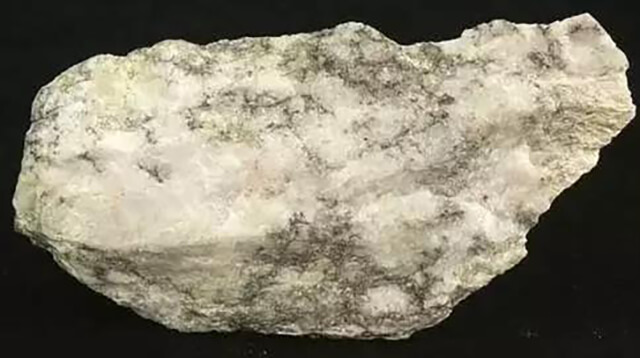 |
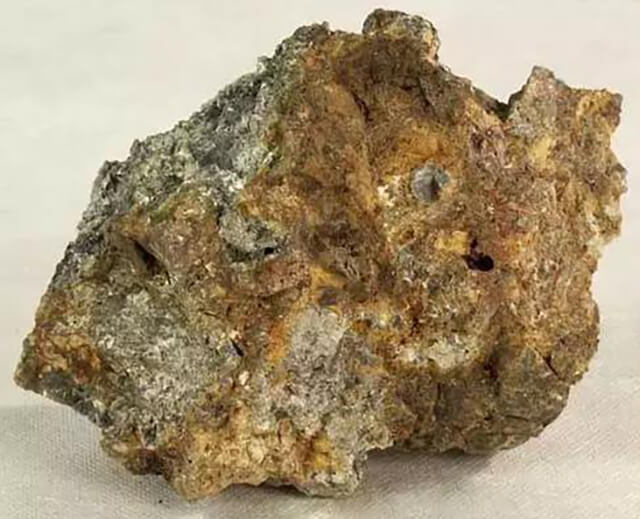 |
Photo Name: gold ore (oxidized ore)
The ore presents two colors of marl and earth yellow, with massive structure. The ore is seriously weathered and belongs to gold ore in oxidation zone, with an average gold grade of 20g / T. |
| Photo Name: natural gold ore
The ore mineral is natural gold, which is coarse-grained bright gold, golden yellow and strong metallic luster. It has granular structure and disseminated structure and occurs in quartz vein. |
 |
 |
Photo Name: ore (gold bearing clay rock)
Greenish gray, fine-grained structure, massive structure, gold bearing clay rock, gold grade 30-40g / T |
| Photo Name: gold ore 3 |  |
 |
Photo Name: sulfide polymetallic gold ore
Visible ore minerals include galena, chalcopyrite and pyrite, and gold minerals are invisible to the naked eye. Gold occurs in sulfide polymetallic ores. |
| Photo Name: gold ore (oxidized ore and rich ore)
The gold deposit is invisible to the naked eye. The gangue mineral is quartz. The ore is seriously weathered, earthy yellowish brown and honeycomb. |
 |
 |
Photo Name: gold silver ore
Disseminated quartz sulfide type gold silver ore is the product of Mesozoic volcanic hydrothermal gold silver deposit. Ore minerals include: gold and silver ore, pyrite. Among them, gold and silver minerals cannot be distinguished by the naked eye. Pyrite is allomorphic granular structure and disseminated structure. Gangue minerals are mainly smoke gray quartz. |
| Photo Name: gold copper ore
The ore minerals are gold minerals, pyrite, chalcopyrite and bornite. The gold deposit is indistinguishable to the naked eye and occurs in sulfide polymetallic ore, with a gold grade of 10G / T. |
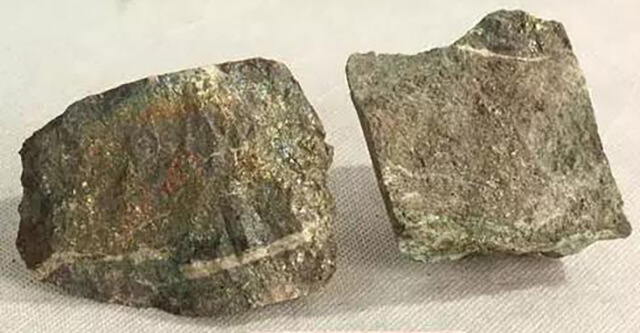 |
 |
Photo Name: gold ore 4
The ore minerals are gold minerals, pyrite, chalcopyrite and sphalerite, and the gangue minerals are quartz. The gold deposit is indistinguishable to the naked eye and mainly occurs in pyrite. Gold grade 7.8g/t. |
| Photo Name: gold ore 5
The ore minerals are gold minerals and pyrite, which cannot be distinguished by naked eyes and occur in pyrite. Pyrite is distributed in altered granite in the form of stockwork. |
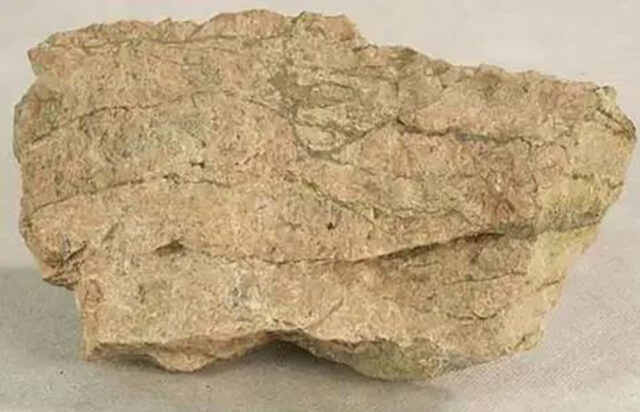 |
 |
Photo Name: vein gold ore
The gold bearing pyrite vein is filled in the fissure of potassic granite, the gold deposit is invisible to the naked eye, and the pyrite fine-grained disseminated is distributed in the fissure filler. |
| Photo Name: disseminated – veinlet gold ore
The ore mineral pyrite is fine-grained and distributed in altered granite in disseminated or veinlet shape. Gold mainly occurs in pyrite. |
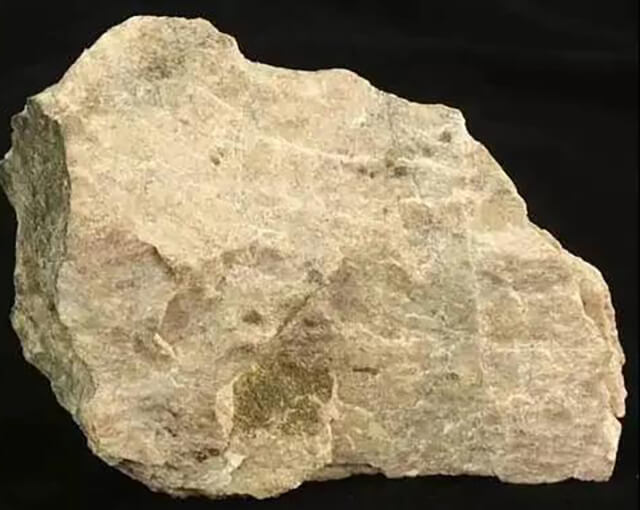 |
 |
Photo Name: beryl ore beryl beryllium ore
The ore mineral is beryl, light blue, hexagonal columnar and large crystal. Beryl composition: be3al2 [si6o18], containing beo11-14%. Gangue minerals include muscovite, quartz and feldspar. It is beryl pegmatite. |
| Photo Name: niobium tantalite ore (massive)
Niobium tantalite, composition: (Fe, Mn) (Nb, TA) 2O6, iron black, semi metallic luster, opaque, uneven fracture, hardness 6, specific gravity 5.2-8.2, massive structure, mainly produced in granite pegmatite, is the main mineral raw material for extracting niobium and tantalum. |
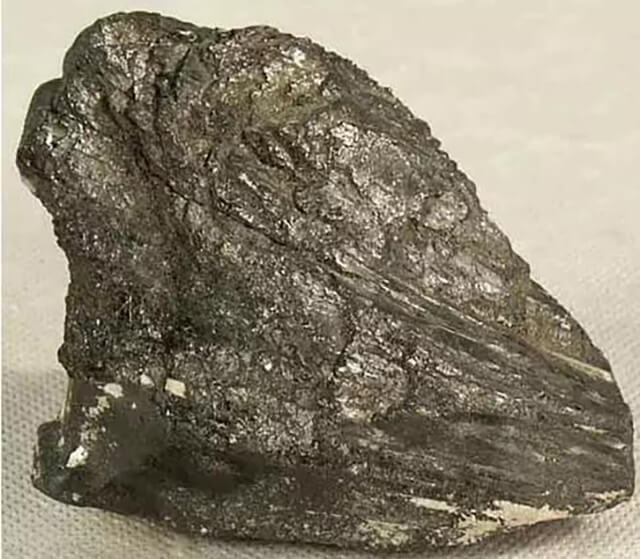 |
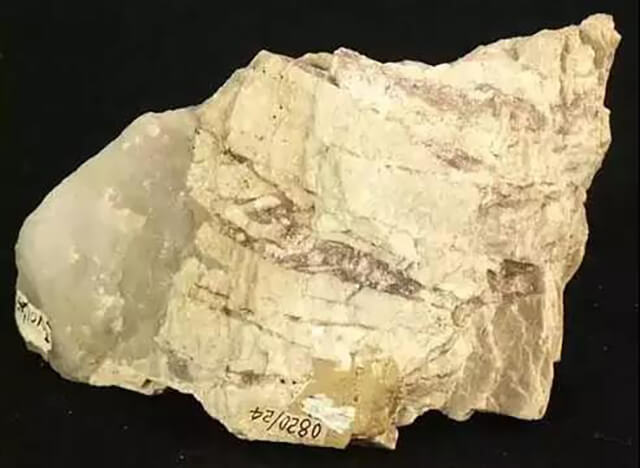 |
Photo Name: lepidolite ore (veinlet)
The ore mineral is lepidolite, lavender, glassy luster, fine scale aggregate, which is filled in the albite fissure in the form of fine veins. Gangue minerals are albite and quartz, with euhedral pegmatite structure, which is the product of the central zone of pegmatite vein. It is the main ore type for extracting metal lithium. |
| Photo Name: niobium tantalite ore 3
The ore mineral niobium tantalite is ferrous, metallic semi metallic luster and opaque. The gangue minerals are mainly albite and a small amount of Muscovite crystals. Niobium tantalite occurs in gangue minerals as granular aggregates, with a small content of only 3-5%. |
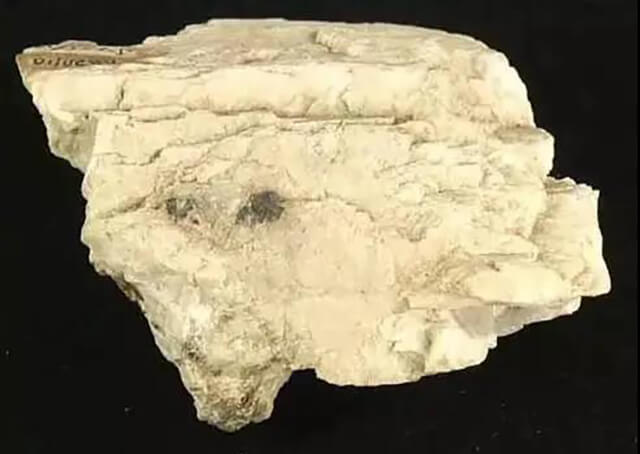 |
 |
Photo Name: niobium tantalite lepidolite ore
Ore minerals include niobium tantalite, iron black, semi metallic luster, lithium mica, lavender, glass luster, in fine scale aggregate, and gangue minerals include quartz. The content of lepidolite is more, about 80%, and the content of niobium tantalite is less, about 2-3%. |
| Photo Name: lepidolite beryl niobium tantalum ore
The ore mineral is lepidolite, lavender, glassy luster, in a fine scale aggregate; Beryl, white with green, glassy luster; Niobium tantalite, iron black, semi metallic luster, granular aggregate, gangue minerals include dolomite. The content of lepidolite is about 70%, beryl is about 20%, and niobium tantalite is about 1-2%. |
 |
 |
Photo Name: spodumene ore (banded)
The ore mineral is spodumene, containing Mn in the composition, which is purple and glassy. It is in its shape and interspersed in thin strips in albite. Gangue minerals include albite, muscovite and quartz. Spodumene content is about 10-20%. It is the main mineral raw material for extracting lithium. |
| Photo Name: Zircon monazite ore
The ore mineral zircon, i.e. zircon, is composed of Zr [SiO4], brown yellow, diamond luster, intact crystal form and in tetragonal columnar shape; Monazite, composition (CE, LA) [PO4], brownish red, resin luster. The ore is produced in pegmatite and can extract rare metal zirconium and rare earth metals cerium and lanthanum. |
 |
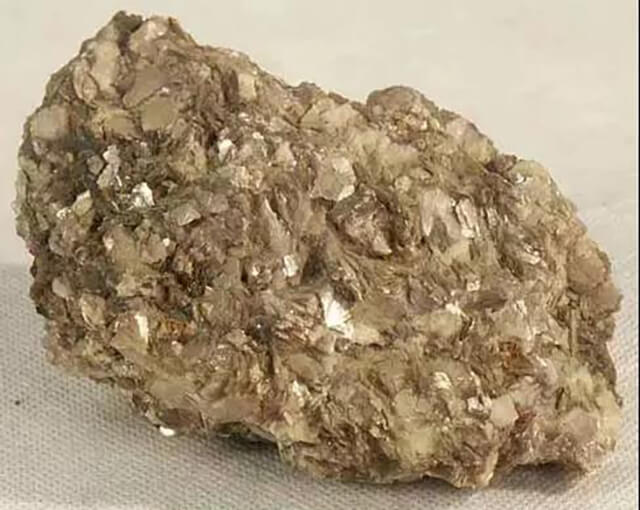 |
Photo Name: niobium tantalite lepidolite ore 2
Ore mineral niobium tantalite, iron black, gold semi metallic luster; Lepidolite, lavender, glassy luster, in flake aggregate. The ore is produced in granite pegmatite and can extract rare metals niobium, tantalum and lithium. |
| Photo Name: beryl ore2 beryl beryllium ore
The ore mineral beryl is emerald green, translucent, glassy and flat columnar crystal. Gangue minerals include coarse-grained quartz, muscovite and fine-grained albite. It is the main ore type for extracting rare metal beryllium. |
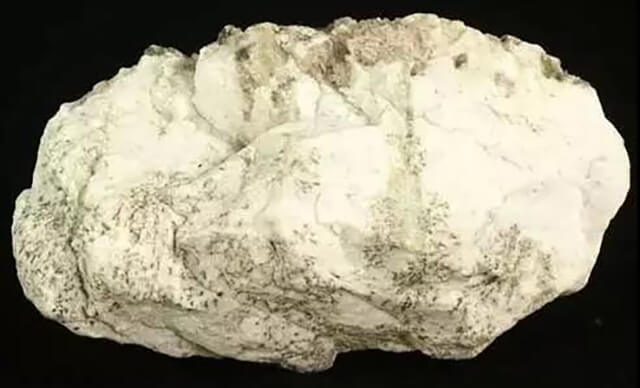 |
 |
Photo Name: Tianhe stone rubidium cesium ore
The ore mineral is Tianhe stone with chemical composition of K [alsi3o8], green and glassy luster; Gangue mineral is quartz. It is mainly produced in pegmatite and is the main ore type for extracting rare metals rubidium and cesium. |
| Photo Name: cesium garnet cesium ore
Cesium garnet is composed of CS [alsi2o6] · H2O, colorless, transparent translucent, glassy luster, hardness of 6.5-7, fracture shell, specific gravity of 2.86-2.90, its crystalline structure and dense massive structure. It is produced in pegmatite. It is the most known mineral containing cesium at present. It is an important mineral raw material for extracting cesium and preparing cesium salt. |
 |
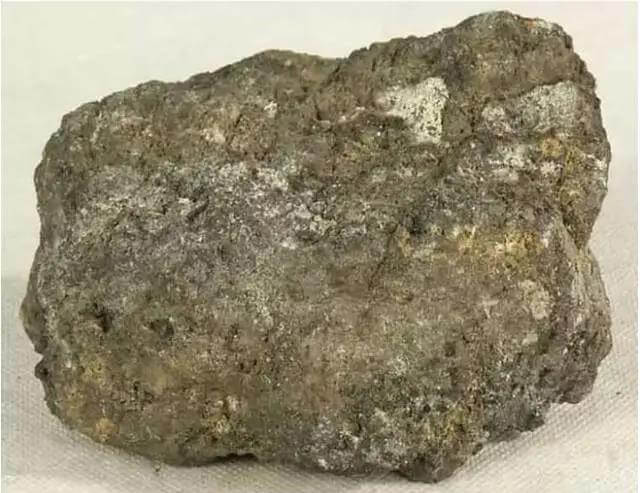 |
Photo Name: tin ore
The ore minerals are cassiterite, dark brown, diamond luster, euhedral semi euhedral medium grain structure and massive structure. The gangue minerals include quartz, with small content. The ore is seriously weathered and the surface pores are developed. |
| Photo Name: striped tin ore
The ore mineral is cassiterite, dark brown, diamond luster, euhedral semi euhedral medium grain structure and striped structure. The crumple phenomenon can be clearly seen in the ore. |
 |
 |
Photo Name: striped magnetite ore 2
It consists of light and black stripes. The black stripe is fine-grained magnetite, and the light stripe is composed of fine-grained magnetite and silicate minerals. |
| Photo Name: banded molybdenite ore (quartz vein)
Ore mineral molybdenite, lead gray, metallic luster, fine scale structure and banded structure. The ore mineral pyrite is light copper, euhedral granular structure, distributed in veinlets, lumps and spots. Gangue minerals are mainly quartz. Molybdenite ore is the main raw material for molybdenum smelting. |
 |
 |
Photo Name: molybdenite ore (in plagioclase granite)
Ore mineral molybdenite, lead gray, metallic luster, scaly structure; Pyrite, light copper, euhedral granular structure. Molybdenite, pyrite and quartz are closely associated and occur in plagioclase granite in the form of fine veins. |
| Photo Name: molybdenite ore (molybdenite beside quartz vein)
The ore mineral is molybdenite, lead gray, metallic luster, coarse scaly structure, with a diameter of 1.5-8mm. The gangue mineral is mainly quartz. Molybdenite occurs symmetrically near the quartz vein. |
 |
 |
Photo Name: banded stibnite ore
The ore mineral stibnite is lead gray, metallic luster and columnar euhedral crystal structure. It exists in banded limestone. It is a mineral of low-temperature hydrothermal origin and an important raw material for antimony smelting. |
| Photo Name: bauxite ore (pisolitic)
It is yellowish gray, earthy structure and pisolitic oolitic structure. It is the product of weathering residue of some igneous and metamorphic rocks containing more aluminum under hot and humid conditions. It is the most important ore for aluminum smelting. Bauxite is a mixture of gibbsite, diaspore, boehmite, hematite, kaolinite, opal and other minerals, so its composition changes greatly, generally containing 40-75% Al2O3. |
 |
 |
Photo Name: chalcopyrite ore (veinlet disseminated)
The ore minerals are chalcopyrite, copper color, allomorphic crystal structure, veinlet disseminated structure, and gangue minerals include feldspar and quartz. It occurs in porphyry copper deposit. |
| Photo Name: chalcopyrite ore (produced in granodiorite porphyry)
The ore mineral chalcopyrite, copper color, allomorphic crystal structure and veinlet structure, occurs in granodiorite porphyry. |
 |
 |
Photo Name: chalcopyrite ore chalcopyrite ore2
The ore mineral is chalcopyrite, copper color, allomorphic granular structure, and occurs in metamorphic granodiorite in disseminated form. |
| Photo Name: massive chalcopyrite ore (containing pyrite)
The ore mineral chalcopyrite is in copper color. The surface is golden yellow, red purple and other colors due to oxidation. The stripe is green and black. It has granular structure and massive structure. Pyrite, light brass, stripe green black, metallic luster, it has granular structure. |
 |
 |
Photo Name: veinlet chalcopyrite ore
The ore mineral chalcopyrite is copper colored, it has granular structure and fine vein structure. Gangue minerals include feldspar, chlorite, etc. |
| Photo Name: chalcocite ore
The ore mineral is chalcocite, lead gray, metallic luster, scattered and soot, which exists in tuff. It is of endogenetic hydrothermal origin and is one of the main mineral raw materials for copper smelting. |
 |
 |
Photo Name: Hematite magnetite ore
The ore mineral hematite is composed of Cu2O, dark red, diamond luster, fine-grained structure, agglomerate and vein structure. It can be seen in the oxidation zone of copper deposit and is the product of oxidation of copper containing sulfide; Magnetite, iron black, semi metallic luster, partially oxidized to limonite. |
| Photo Name: chalcopyrite ore chalcopyrite ore3
The ore mineral chalcopyrite is copper, and its surface is red purple, golden yellow and other colors due to oxidation. It has crystalline structure, disseminated and lump structure, and massive sulfide copper rich ore. |
 |
 |
Photo Name: nickel rich ore in oxidation zone
The ore is seriously weathered, with earthy yellow surface and developed holes. It is difficult to identify its mineral composition with naked eyes. It is a nickel rich ore in the oxidation zone. |
| Photo Name: nickel poor ore (star shaped mottled nickel sulfide)
The ore mineral is nickel pyrite, bronze yellow, metallic luster, it has granular structure, dot and mottled complex structure, with low content. The gangue mineral is mainly chlorite, and the host rock is medium grained lherzolite |
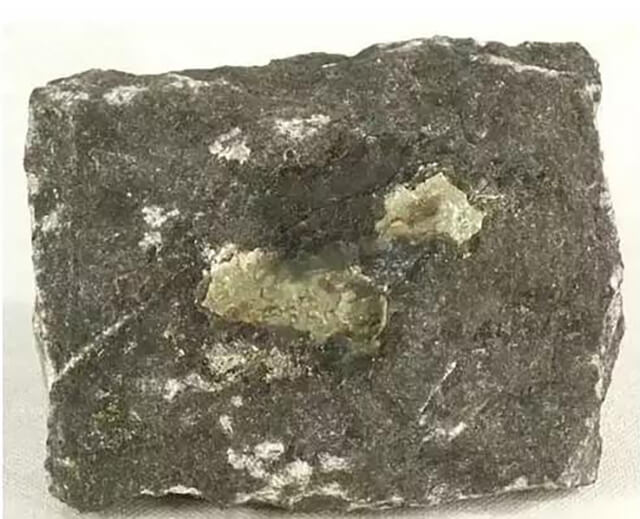 |
 |
Photo Name: rich nickel ore
The ore minerals are nickel pyrite, ancient copper gold, metallic luster, its crystalline structure, sponge structure, high nickel content, and the gangue mineral is chlorite. |
| Photo Name: Galenite ore2
The ore mineral is galena, lead gray, metallic luster, euhedral semi euhedral granular structure, breccia structure, breccia diameter is about 3-5cm, galena content is about 10-15%, and gangue mineral is fluorite, which is the product of hydrothermal filling deposit. |
 |
 |
Photo Name: marmatite ore
The ore mineral is iron sphalerite, which is a Fe rich variant of sphalerite. It is brown, darker than sphalerite, semi metallic luster, brighter than sphalerite, harder than sphalerite, and less relative density than sphalerite. |
| Photo Name: Galenite ore3
Ore mineral galena, lead gray, metallic luster. Gangue minerals include garnet, maroon, glassy luster, which is a typical high-temperature metamorphic mineral; Fushan stone is yellowish green and glassy. It has crystalline structure and is distributed in columnar aggregates. |
 |
 |
Photo Name: lead zinc ore
Ore mineral galena, lead gray, metallic luster, its crystalline structure; Sphalerite, brownish gray, semi metallic luster, its crystalline structure, and the content of galena and sphalerite is about 40% – 50%; Pyrite, light copper color, metallic luster, euhedral semi euhedral crystal structure. Lead zinc deposits are distributed in quartz veins in massive and disseminated form. |
| Photo Name: lead zinc ore 2
The ore minerals are mainly galena, lead gray, metallic luster, euhedral semi euhedral granular structure and angular granular structure. The diameter of breccia is about 0.5-1cm and the content is 60% – 70%. The gangue minerals are quartz and fluorite. |
 |
 |
Photo Name: lead zinc ore lead zinc ore3
Ore mineral sphalerite, brownish gray, semi metallic luster, euhedral semi euhedral granular structure, breccia structure, content about 10% – 20%; Pyrite, light copper color, euhedral semi euhedral granular structure, content about 80%. |
| Photo Name: Galenite ore4
Ore mineral galena, lead gray, stripe gray black, metallic luster, coarse-grained structure and massive structure. The ore is rich in galena. |
 |
 |
Photo Name: lead zinc ore 4
The ore minerals are mainly galena, metallic luster, crystalline structure and massive structure, with a content of about 90%; Pyrite, light copper color, metallic luster, punctate and veinlet, with a content of about 10%; The content of sphalerite is small, and gangue minerals are almost absent. |
| Photo Name: Galenite ore5
Ore mineral galena, lead gray, metallic luster, medium coarse grain structure, massive structure. Pyrite, light copper, metallic luster, euhedral semi euhedral granular structure, agglomerate structure, content about 20%. |
 |
 |
Photo Name: lead zinc ore lead zinc ore5
Cyan gray, with brown hue, fine-grained structure and massive structure. Ore minerals galena and sphalerite account for more than 90% and gangue minerals account for less. |
| Photo Name: wolframite ore (quartz vein type) 3
The ore mineral wolframite is black, semi metallic luster, thin plate-shaped large crystals, distributed in quartz veins, and mainly occurs in high-temperature hydrothermal deposits in granite distribution areas. It is the main mineral raw material for tungsten smelting. |
 |

